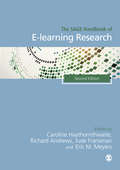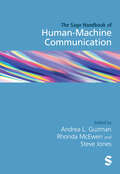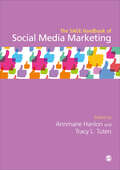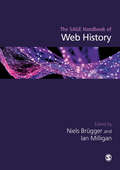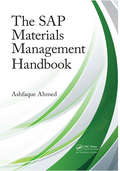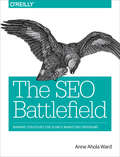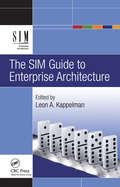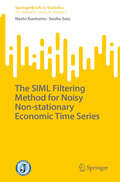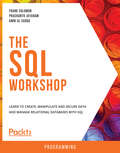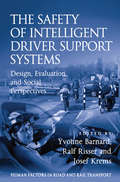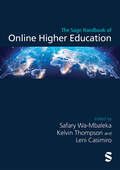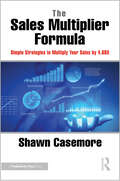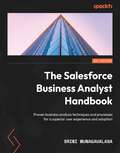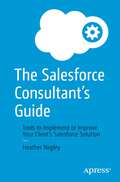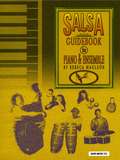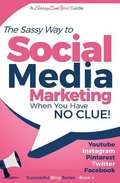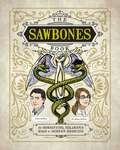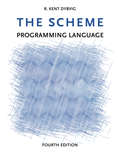- Table View
- List View
The SAGE Handbook of E-learning Research
by Eric M. Meyers Jude Fransman Professor Caroline Haythornthwaite Mr Richard N. L. AndrewsThe new edition of The SAGE Handbook of E-Learning Research retains the original effort of the first edition by focusing on research while capturing the leading edge of e-learning development and practice. Chapters focus on areas of development in e-learning technology, theory, practice, pedagogy and method of analysis. Covering the full extent of e-learning can be a challenge as developments and new features appear daily. The editors of this book meet this challenge by including contributions from leading researchers in areas that have gained a sufficient critical mass to provide reliable results and practices. The 25 chapters are organised into six key areas: 1. THEORY 2. LITERACY & LEARNING 3. METHODS & PERSPECTIVES 4. PEDAGOGY & PRACTICE 5. BEYOND THE CLASSROOM 6. FUTURES
The SAGE Handbook of E-learning Research, 2e
by Eric M. Meyers Richard Andrews Jude Fransman Professor Caroline HaythornthwaiteThe new edition of The SAGE Handbook of E-Learning Research retains the original effort of the first edition by focusing on research while capturing the leading edge of e-learning development and practice. Chapters focus on areas of development in e-learning technology, theory, practice, pedagogy and method of analysis. Covering the full extent of e-learning can be a challenge as developments and new features appear daily. The editors of this book meet this challenge by including contributions from leading researchers in areas that have gained a sufficient critical mass to provide reliable results and practices. The 25 chapters are organised into six key areas: 1. THEORY 2. LITERACY & LEARNING 3. METHODS & PERSPECTIVES 4. PEDAGOGY & PRACTICE 5. BEYOND THE CLASSROOM 6. FUTURES
The SAGE Handbook of Human–Machine Communication
by Steve Jones Rhonda McEwen Andrea L. GuzmanThe SAGE Handbook of Human-Machine Communication has been designed to serve as the touchstone text for researchers and scholars engaging in new research in this fast-developing field. Chapters provide a comprehensive grounding of the history, methods, debates and theories that contribute to the study of human-machine communication. Further to this, the Handbook provides a point of departure for theorizing interactions between people and technologies that are functioning in the role of communicators, and for considering the theoretical and methodological implications of machines performing traditionally ‘human’ roles. This makes the Handbook the first of its kind, and a valuable resource for students and scholars across areas such as communication, media and information studies, and computer science, as well as for practitioners, engineers and researchers interested in the foundational elements of this emerging field. Part 1: Histories and Trajectories Part 2: Approaches and Methods Part 3: Concepts and Contexts Part 4: Technologies and Applications
The SAGE Handbook of Human–Machine Communication
by Steve Jones Rhonda McEwen Andrea L. GuzmanThe SAGE Handbook of Human-Machine Communication has been designed to serve as the touchstone text for researchers and scholars engaging in new research in this fast-developing field. Chapters provide a comprehensive grounding of the history, methods, debates and theories that contribute to the study of human-machine communication. Further to this, the Handbook provides a point of departure for theorizing interactions between people and technologies that are functioning in the role of communicators, and for considering the theoretical and methodological implications of machines performing traditionally ‘human’ roles. This makes the Handbook the first of its kind, and a valuable resource for students and scholars across areas such as communication, media and information studies, and computer science, as well as for practitioners, engineers and researchers interested in the foundational elements of this emerging field. Part 1: Histories and Trajectories Part 2: Approaches and Methods Part 3: Concepts and Contexts Part 4: Technologies and Applications
The SAGE Handbook of Social Media Marketing
by Annmarie Hanlon Tracy L. TutenSocial media marketing has become indispensable for marketers who utilize social media to achieve marketing objectives ranging from customer care to advertising to commerce. This Handbook explores the foundations and methodologies in analysing the important aspects of social media for organisations and consumers. It investigates critical areas concerning communities, culture, communication and content, and considers social media sales. This Handbook brings together the critical factors in social media marketing as the essential reference set for researchers in this area of continued growth. It is essential reading for postgraduate students, researchers, and practitioners in a range of disciplines exploring the area. Part 1: Foundations of Social Media Marketing Part 2: Methodologies and Theories in Social Media Part 3: Channels and Platforms in Social Media Part 4: Tools, Tactics, and Techniques in Social Media Marketing Part 5: Management and Metrics in Social Media Part 6: Ethical Issues in Social Media
The SAGE Handbook of Social Media Marketing
by Annmarie Hanlon Tracy L. TutenSocial media marketing has become indispensable for marketers who utilize social media to achieve marketing objectives ranging from customer care to advertising to commerce. This Handbook explores the foundations and methodologies in analysing the important aspects of social media for organisations and consumers. It investigates critical areas concerning communities, culture, communication and content, and considers social media sales. This Handbook brings together the critical factors in social media marketing as the essential reference set for researchers in this area of continued growth. It is essential reading for postgraduate students, researchers, and practitioners in a range of disciplines exploring the area. Part 1: Foundations of Social Media Marketing Part 2: Methodologies and Theories in Social Media Part 3: Channels and Platforms in Social Media Part 4: Tools, Tactics, and Techniques in Social Media Marketing Part 5: Management and Metrics in Social Media Part 6: Ethical Issues in Social Media
The SAGE Handbook of Web History
by Ian Milligan Niels BrüggerThe Web has been with us now for almost 25 years. An integral part of our social, cultural and political lives, ‘new media’ is simply not that new anymore. Despite the rapidly expanding archives of information at our disposal, and the recent growth of interest in web history as a field of research, the information available to us still far outstrips our understanding of how to interpret it. The SAGE Handbook of Web History marks the first comprehensive review of this subject to date. Its editors emphasise two main different forms of study: the use of the web as an historical resource, and the web as an object of study in its own right. Bringing together all the existing knowledge of the field, with an interdisciplinary focus and an international scope, this is an incomparable resource for researchers and students alike. Part One: The Web and Historiography Part Two: Theoretical and Methodological Reflections Part Three: Technical and Structural Dimensions of Web History Part Four: Platforms on the Web Part Five: Web History and Users, some Case Studies Part Six: The Roads Ahead
The SAP Materials Management Handbook
by Ashfaque AhmedAlthough tens of thousands of global users have implemented Systems, Applications, and Products (SAP) for enterprise data processing for decades, there has been a need for a dependable reference on the subject, particularly for SAP materials management (SAP MM).Filling this need, The SAP Materials Management Handbook provides a complete understandi
The SEO Battlefield: Winning Strategies for Search Marketing Programs
by Anne Ahola WardWelcome to the battlefield. Every day, companies ranging from startups to enterprises fight to achieve high search rankings, knowing that previous success can quickly vanish. With this practical guide, you’ll learn how to put search engine optimization (SEO) methodology into practice, including the research, data analysis, and constant experimentation required to build an SEO program specific to your organization that can help you improve search results.Running a successful SEO program requires a team with a mix of skills, including marketing, analytics, website development, and automation. Author Anne Ahola Ward walks marketers and developers through SEO essentials and provides real-world case studies of successful and not-so-successful SEO programs. You’ll quickly understand why this is both an exciting and critical time to adopt SEO in your organization.Perform keyword goals and research, and spot search trendsUnderstand the motivation and creativity of the SEO mindsetRun a campaign to generate traffic and measure the resultsUse mobile and platform-agnostic strategies for search growthDemonstrate the value of your search marketing effortsInclude web development in your SEO program—everything from quick updates to UX/UI strategyLearn the sweetest way to run and report on an search program
The SIM Guide to Enterprise Architecture
by Leon KappelmanEnterprise architecture is leading IT's way to the executive boardroom, as CIOs are now taking their place at the management table. Organizations investing their time, money, and talent in enterprise architecture (EA) have realized significant process improvement and competitive advantage. However, as these organizations discovered, it is one thing
The SIML Filtering Method for Noisy Non-stationary Economic Time Series (SpringerBriefs in Statistics)
by Naoto Kunitomo Seisho SatoIn this book, we explain the development of a new filtering method to estimate the hidden states of random variables for multiple non-stationary time series data. This method is particularly helpful in analyzing small-sample non-stationary macro-economic time series. The method is based on the frequency-domain application of the separating information maximum likelihood (SIML) method, which was proposed by Kunitomo, Sato, and Kurisu (Springer, 2018) for financial high-frequency time series. We solve the filtering problem of hidden random variables of trend-cycle, seasonal, and measurement-error components and propose a method to handle macro-economic time series. The asymptotic theory based on the frequency-domain analysis for non-stationary time series is developed with illustrative applications, including properties of the method of Muller and Watson (2018), and analyses of macro-economic data in Japan. Vast research has been carried out on the use of statistical time series analysis for macro-economic time series. One important feature of the series, which is different from standard statistical time series analysis, is that the observed time series is an apparent mixture of non-stationary and stationary components. We apply the SIML method for estimating the non-stationary errors-in-variables models. As well, we discuss the asymptotic and finite sample properties of the estimation of unknown parameters in the statistical models. Finally, we utilize their results to solve the filtering problem of hidden random variables and to show that they lead to new a way to handle macro-economic time series.
The SNES Encyclopedia: Every Game Released for the Super Nintendo Entertainment System
by Chris Scullion“If you didn’t grow up with an SNES and are curious to know about games like Chrono Trigger, Super Metroid and more, then this is the book for you.” —Got Game Following on from the previously released NES Encyclopedia, The SNES Encyclopedia is the ultimate resource for fans of Nintendo’s second home video game console, the Super Nintendo Entertainment System.Containing detailed information on all 780 games released for the SNES in the west, this enormous book is full of screenshots, trivia and charmingly bad jokes. It also includes a bonus section covering the entire twenty-two-game library of the Virtual Boy, Nintendo’s ill-fated 3D system which was released at the end of the SNES’s life.“Without question, The SNES Encyclopedia: Every Game Released for the Super Nintendo Entertainment System makes for an excellent video game library addition. It’s an economical and well-crafted book of Nintendo’s 16-bit history, and it’s sure to leave you yearning for the days of Super Mario World’s vibrant colors, Super Metroid’s intoxicating atmosphere, and Super Punch Out!!’s incredible tension. If you already own The NES Encyclopedia, you’ll know what to expect, but if you’re just starting a collection of video game-themed books, you can’t go wrong with this condense and informative offering.” —Nintendo World Report
The SQL Server DBA’s Guide to Docker Containers: Agile Deployment without Infrastructure Lock-in
by Edwin M SarmientoGet introduced to the world of Docker containers from a SQL Server DBA’s perspective. This book explains container technology and how it can improve the deployment of your SQL Server databases without infrastructure lock-in. You will be equipped with the right technical skills to guide stakeholders in your business as they adopt and adapt to new technologies to improve time-to-market and competitiveness. You will learn how to build a lab environment at home on which to build skills that transfer directly into your day job. This book teaches you how to install and configure Docker on both Windows Server and Linux operating systems. You will learn the most common Docker commands that you need to know as a DBA to deploy and manage SQL Server on containers. Support for SQL Server on Linux is new, and this book has your back with guidance on creating Docker images specifically for deployment to a Linux platform. Included is coverage of key Linux commands needed to manage SQL Server on that operating system. By the end of the book you will have learned how to create your own custom SQL Server container images with configuration settings that are specific to your organization, that are capable of being deployed to both Windows Server and Linux. What You Will LearnCreate Docker containers for agile deployment of SQL ServerRun multiple SQL Server instances on a single Linux machineDeploy custom images specific to your organization’s needsKnow the benefits and architecture of container technologyInstall and configure Docker on Windows Server and Linux Manage and persist SQL Server data in Docker containersWho This Book Is ForIntermediate to senior SQL Server DBAs who are familiar with SQL Server on Windows and want to build their existing skills to deploy and manage SQL Server on Linux and through Docker containers. Readers should have a grasp of relational database concepts and be comfortable with the Transact-SQL language.
The SQL Workshop: A New, Interactive Approach to Learning SQL
by Prashanth Jayaram Frank Solomon Awni Al SaqqaCut through the noise and get real results with a step-by-step approach to learning SQL Key Features A structured, straightforward introduction to SQL for beginners A SQL tutorial with step-by-step exercises and activities that help build key skills Structured to let you progress at your own pace, on your own terms Use your physical print copy to redeem free access to the online interactive edition Book Description You already know you want to learn SQL, and the best way to learn SQL is to learn by doing. The SQL Workshop focuses on building up your SQL database management skills so that you can easily store and retrieve data or become the in-house expert on complex queries. You'll learn from real examples that lead to real results. Throughout The SQL Workshop, you'll take an engaging step-by-step approach to understanding SQL programming. You won't have to sit through any unnecessary theory. If you're short on time you can jump into a single exercise each day or spend an entire weekend learning how to create functions and stored procedures. It's your choice. Learning on your terms, you'll build up and reinforce key skills in a way that feels rewarding. Every physical print copy of The SQL Workshop unlocks access to the interactive edition. With videos detailing all exercises and activities, you'll always have a guided solution. You can also benchmark yourself against assessments, track progress, and receive content updates. You'll even earn a secure credential that you can share and verify online upon completion. It's a premium learning experience that's included with your printed copy. To redeem, follow the instructions located at the start of your book. Fast-paced and direct, The SQL Workshop is the ideal companion for SQL beginners. You'll build and iterate on your code like a software developer, learning along the way. This process means that you'll find that your new skills stick, embedded as best practice. A solid foundation for the years ahead. What you will learn Learn how to create normalized databases Explore how to insert data into tables efficiently Explore various techniques to retrieve data from multiple tables Build advanced queries using techniques like subqueries and views Learn advanced SQL programming techniques such as functions and triggers Who this book is for Our goal at Packt is to help you be successful, in whatever it is you choose to do. The SQL Workshop is an ideal SQL tutorial for the SQL beginner who is just getting started. Pick up a Workshop today, and let Packt help you develop skills that stick with you for life.
The Safety of Intelligent Driver Support Systems: Design, Evaluation and Social Perspectives (Human Factors in Road and Rail Transport)
by Ralf RisserThe development of new technologies of information and communication will, in the coming years, transform deeply their uses and practices in transport. The current developments in the field of road telematics and driver assistance systems offer a real opportunity to aid mobility and road safety. However, they also raise numerous questions about their effectiveness, possible positive and negative modifications of behaviour or attitudes and about their acceptability by drivers. Problems related to the design and evaluation of intelligent driver support systems (IDSSs) and social perspectives related to their introduction on a large scale may only be fully addressed from a multi-disciplinary point of view. People from different backgrounds, from both engineering and social sciences, should be involved in this development. This book provides such knowledge from both a human and social factors background. The Safety of Intelligent Driver Support Systems serves the training of professionals working within the transport area so that they can use this knowledge in their work. It will be of direct interest to transportation and traffic professionals, engineers, system designers, researchers and specialists working in automotive and related industries, departments of transport, and communication and public bodies related to transport in the automotive industry, public authorities, etc. Also students at Masters and PhD level, performing studies in the road transportation area, will find in this book a rich source of knowledge. Teachers and trainers, both in professional training and academic education, may use the book as a basis for giving a course on the topic addressed.
The Sage Handbook of Online Higher Education
by Safary Wa-Mbaleka Kelvin Thompson Leni CasimiroThe SAGE Handbook of Online Higher Education presents a cutting-edge collection of 50 essays that explores the rapidly evolving landscape of online teaching and learning in higher education. Assembled and contributed by a team of leading experts, the Handbook adopts a uniquely holistic approach to examining the needs of online education. Chapters bring together voices from diverse and international backgrounds to provide insights applicable to a broad range of contexts, and present practical strategies for planning, delivering quality online higher education. The handbook covers a wide range of topics, including online pedagogy, instructional design, student engagement, technological innovation, assessment, leadership, and the developing role of online education in the context of broader societal and cultural shifts. The SAGE Handbook of Online Higher Education is an essential resource for educators, researchers, policymakers, and practitioners who seek to understand and shape the future of higher education in the digital age. Section 1: Fundamentals of Online Education Section 2: Online Education Around the World Section 3: Online Instructional Design Section 4: Online Instructional Delivery Section 5: Instructional Technology for Online Education Section 6: Online Education Administration and Management Section 7: Student Support Services
The Sage Handbook of Online Higher Education
by Safary Wa-Mbaleka Kelvin Thompson Leni CasimiroThe SAGE Handbook of Online Higher Education presents a cutting-edge collection of 50 essays that explores the rapidly evolving landscape of online teaching and learning in higher education. Assembled and contributed by a team of leading experts, the Handbook adopts a uniquely holistic approach to examining the needs of online education. Chapters bring together voices from diverse and international backgrounds to provide insights applicable to a broad range of contexts, and present practical strategies for planning, delivering quality online higher education. The handbook covers a wide range of topics, including online pedagogy, instructional design, student engagement, technological innovation, assessment, leadership, and the developing role of online education in the context of broader societal and cultural shifts. The SAGE Handbook of Online Higher Education is an essential resource for educators, researchers, policymakers, and practitioners who seek to understand and shape the future of higher education in the digital age. Section 1: Fundamentals of Online Education Section 2: Online Education Around the World Section 3: Online Instructional Design Section 4: Online Instructional Delivery Section 5: Instructional Technology for Online Education Section 6: Online Education Administration and Management Section 7: Student Support Services
The Sales Multiplier Formula: Simple Strategies to Multiply Your Sales by 4.68X
by Shawn CasemoreWhat do companies such as Northwestern Mutual Life, Hilton, and Nokia have in common? They approach selling differently than any of their competitors. Sales is not a transaction executed by the sales department; it’s a process that all employees support. The result? The sale value for each new customer is most often double, triple, or even quadruple what their closest competitors achieve. This book dives deeply into the exact formula for how you can achieve similar, if not even greater, results. Consider this your guide to shifting your organization from transactional selling to embracing a sales method that will explode your sales revenue, and engage your entire organization in doing so. The reason for embracing this method extends beyond achieving explosive sales growth. The author has coached thousands of sales professionals over the years, and one challenge they face stands out more than any other. It’s that selling is becoming increasingly difficult. Why do you think there are over one million sales-related vacancies in the United States at this very moment, according to the US Bureau of Labor Statistics? Prospects are more challenging to reach than ever; work-from-home schedules, anti-spam legislation, and policies that restrict visitors are making it increasingly difficult for your sales team to do what you want them to do – sell. Worse yet, when they do make a sale, it’s as if they are burdening the rest of the organization. Complaints about unachievable delivery dates, unacceptable terms, or insufficient profit, all result in a clear divide between sales, and everyone else. The result? A slow erosion of your sales, and an increased likelihood that your sales team will soon be searching for a different career. It’s been this way for a while now, and it will continue to be unless you adopt what the author shares in this book.
The Salesforce Business Analyst Handbook: Proven business analysis techniques and processes for a superior user experience and adoption
by Srini MunagavalasaBecome a proficient Salesforce business analyst with the help of expert recommendations, techniques, best practices, and practical advicePurchase of the print or Kindle book includes a free eBook in the PDF format.Key FeaturesLearn the intricacies and nuances of every stage of a project's implementationDiscover real-world examples, tips, and tricks that you can apply to any Salesforce projectOvercome the challenges inherent in user interaction and improve your customer experienceBook DescriptionSalesforce business analysis skills are in high demand, and there are scant resources to satisfy this demand. This practical guide for business analysts contains all the tools, techniques, and processes needed to create business value and improve user adoption.The Salesforce Business Analyst Handbook begins with the most crucial element of any business analysis activity: identifying business requirements. You'll learn how to use tacit business analysis and Salesforce system analysis skills to rank and stack all requirements as well as get buy-in from stakeholders. Once you understand the requirements, you'll work on transforming them into working software via prototyping, mockups, and wireframing. But what good is a product if the customer cannot use it? To help you achieve that, this book will discuss various testing strategies and show you how to tailor testing scenarios that align with business requirements documents. Toward the end, you'll find out how to create easy-to-use training material for your customers and focus on post-production support – one of the most critical phases. Your customers will stay with you if you support them when they need it!By the end of this Salesforce book, you'll be able to successfully navigate every phase of a project and confidently apply your new knowledge in your own Salesforce implementations.What you will learnCreate a roadmap to deliver a set of high-level requirementsPrioritize requirements according to their business valueIdentify opportunities for improvement in process flowsCommunicate your solution design via conference room pilotsConstruct a requirements traceability matrixConduct user acceptance tests and system integration testsDevelop training artifacts so your customers can easily use your systemImplement a post-production support model to retain your customersWho this book is forThis book is for intermediate- to senior-level business analysts with a basic understanding of Salesforce CRM software or any CRM technology who want to learn proven business analysis techniques to set their business up for success.
The Salesforce Consultant’s Guide: Tools to Implement or Improve Your Client’s Salesforce Solution
by Heather NegleyBreak down the art and science of Salesforce consulting. This book will help you refine your consulting skills on the Salesforce platform. Author Heather Negley, a seasoned consultant who has completed over 30 Salesforce delivery projects in the past nine years, equips Salesforce professionals with detailed explanations on the stages of a project and the skills you need for each stage. You will learn the type of roles on a project, so that you can plan your career path.If you need help managing clients, this book teaches you how to effectively work with and advise people. You will go through the following main sections to round out your skills and service offerings:The best learning and community resources, including mentoring programsTips on how to get job experienceThe evolution of software developmentProject rolesThe parts of a projectConsulting skills The consulting skills section of the book breaks down each skill and explains the parts of the project to which you should apply your skills and real-world examples. Topics include client management, communication, emotional intelligence, critical thinking, and avoiding cognitive biases.What You Will Learn Identify patterns in your projects through archetype identificationWatch out for specific risks common to project typesChoose the best consulting tool from your toolbox, depending on the problem that you encounterWho This Book Is ForPeople who work as Salesforce administrators for their industry and want to make a move into consulting. It is an excellent choice for someone who is interested in project work and likes to work with people to help them make decisions.
The Salsa Guidebook
by Sher Music Rebeca MauleonThe only complete method book on Salsa ever published. Numerous musical examples of how different Afro-Cuban styles are created, what each instrument does, text explaining the history and structure of the music, etc. "This will be the Salsa Bible for years to come." Sonny Bravo, Tito-Puente's pianist.
The Samantha Granger Experiment: Fused
by Kari Lee Townsend<p>When you make a face or cross your eyes, do your parents tease that if you're not careful, your face might stay that way forever?<br>Well, my parents said that if I'm not careful, I'll turn into one of my gadgets. </p><p><b>I thought they were joking, people!</b></p><p>But-somehow, someway-I have become a living, breathing, walking piece of technology. Apparently my head now has a built-in GPS and my palm is equipped with talking and texting capabilities-just like my cell phone!</p><p>Now I'm a techno-superhero with powers that seem to have a mind of their own. And, in my case, keeping a secret identity is harder than it sounds. I short-circuit every time Trevor Hamilton looks my way. </p><p>Like being a girl isn't stressful enough. </p>
The Sassy Way to Social Media Marketing When You Have No Clue
by Gundi GabrielleSocial Media marketing + free bonus, Step-By-Step: Winning, Easy-to-Follow Strategies for Building a Large Following on Social Media.
The Sawbones Book: The Hilarious, Horrifying Road to Modern Medicine
by Justin McElroy Dr. Sydnee McElroyEvery week, Dr. Sydnee McElroy and her husband Justin amaze, amuse, and gross out (depending on the week) hundreds of thousands of avid listeners to their podcast, Sawbones. Consistently rated a top podcast on iTunes, with over 15 million total downloads, this rollicking journey through thousands of years of medical mishaps and miracles is not only hilarious but downright educational. While you may never even consider applying boiled weasel to your forehead (once the height of sophistication when it came to headache cures), you will almost certainly face some questionable medical advice in your everyday life (we&’re looking at you, raw water!) and be better able to figure out if this is a miracle cure (it&’s not) or a scam. Table of Contents: Part 1: The Unnerving The Resurrection Men Opium An Electrifying Experience Weight Loss Charcoal The Black Plague Pliny the Elder Erectile Dysfunction Spontaneous Combustion The Doctor Is In Trepanation Part II: The Gross Mummy Medicine Mercury The Guthole Bromance A Piece of Your Mind The Unkillable Phineas Gage Phrenology The Man Who Drank Poop Robert Liston Urine Luck! Radium Humorism The Doctor Is In The Straight Poop Part III: The Weird The Dancing Plague Curtis Howe Springer Smoke &’Em if You Got ëEm A Titanic Case of Nausea Arsenic Paracelsus Honey Self-Experimentation Homeopathy The Doctor Is In Part IV: The Awesome The Poison Squad Bloodletting Death by Chocolate John Harvey Kellogg Parrot Fever Detox Vinegar Polio Vaccine The Doctor Is In.
The Scheme Programming Language, fourth edition
by R. Kent DybvigA thoroughly updated and expanded edition brings this popular introductory text and reference up to date with the current Scheme standard, the Revised6 Report on Scheme.Scheme is a general-purpose programming language, descended from Algol and Lisp, widely used in computing education and research and a broad range of industrial applications. This thoroughly updated edition of The Scheme Programming Language provides an introduction to Scheme and a definitive reference for standard Scheme, presented in a clear and concise manner. Written for professionals and students with some prior programming experience, it begins by leading the programmer gently through the basics of Scheme and continues with an introduction to some of the more advanced features of the language. The fourth edition has been substantially revised and expanded to bring the content up to date with the current Scheme standard, the Revised6 Report on Scheme. All parts of the book were updated and three new chapters were added, covering the language's new library, exception handling, and record-definition features. The book offers three chapters of introductory material with numerous examples, eight chapters of reference material, and one chapter of extended examples and additional exercises. All of the examples can be entered directly from the keyboard into an interactive Scheme session. Answers to many of the exercises, a complete formal syntax of Scheme, and a summary of forms and procedures are provided in appendixes. The Scheme Programming Language is the only book available that serves both as an introductory text in a variety of courses and as an essential reference for Scheme programmers.
